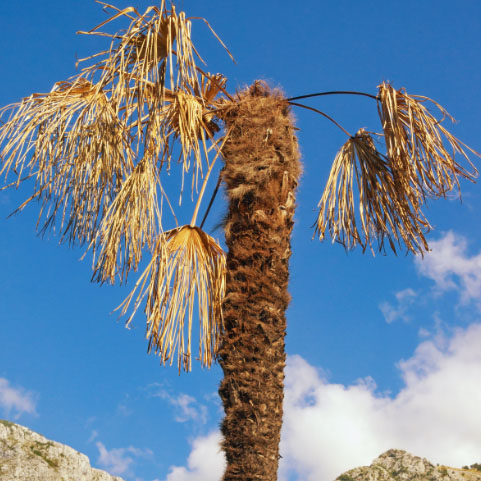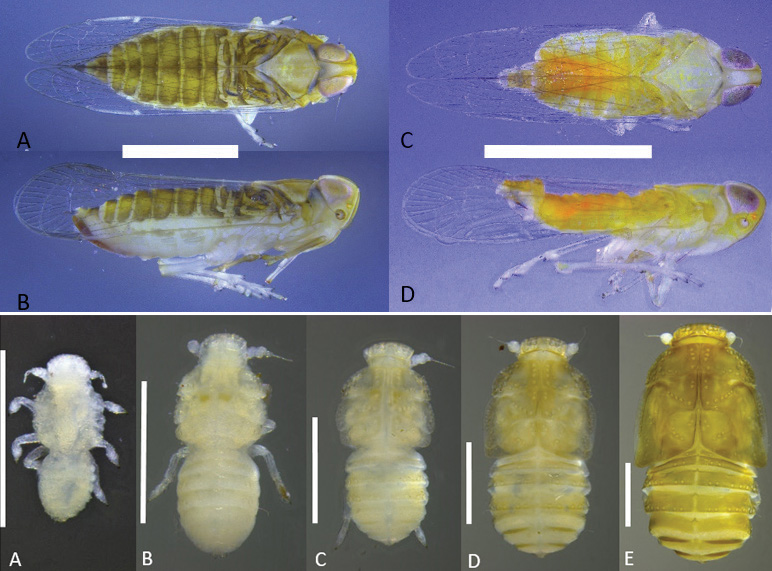Lethal Bronzing is a disease that has been spreading throughout the Sarasota area, killing even the hardest and established palm trees. While Lethal Bronzing cannot be cured, it can be prevented and controlled from spreading. Contact the certified arborists at GreenEdge today to learn how we can protect your palms from Lethal Bronzing.
What Is Lethal Bronzing?
Lethal Bronzing (also known as Texas Phoenix Palm Decline) is a disease that affects palm trees and is caused by the foreign bacteria Phytoplasma palmae. The bacteria that causes Lethal Bronzing is closely related to another palm disease Lethal Yellowing.
The disease was first detected within the USA in Texas during the 1980s and spread across the country until cases were reported in Hillsborough County Florida in 2006.
Since this time it has spread throughout Florida but mostly around the central part of the state.
The native sabal palm and other hardy palm species are vulnerable to lethal bronzing. Very tall palm trees are especially susceptible and Florida nurseries, businesses and homeowners, and municipalities should take precautions to prevent the spread of the disease or risk large palm trees dying and becoming an expensive problem.
A Global Problem Affecting Local Homeowners

Lethal bronzing, which experts say likely originated in Mexico, also is found in parts of Texas and throughout the Caribbean. Some worry it will migrate to California and Arizona, infecting date palms and damaging that fruit crop. The disease has already heavily damaged Jamaica’s coconut plantations, and Brazil is taking preventive measures to avoid invasion.
How Does Lethal Bronzing Spread?
Lethal bronzing is spread solely by the haplaxius crudus, a tiny winged insect sometimes called the American palm cixiid (pronounced Sicksheed) or, generically known as a treehopper.
These specific treehoppers (there are other kinds) inject the bacteria through their saliva when feasting on the sap from a palm’s leaves. Any other palm cixiid that later feeds from the tree will pick up the infection and pass the bacteria to more palms.
The foreign bacteria Phytoplasma palmae are spread from the insect’s mouth into the phloem, the vascular tissue that moves carbohydrates from the leaves to the roots of the plant.
A Difficult Insect To Spot Before It Is Becomes A Problem
The insect is nearly undetectable due to its small size, ability to camouflage, and the fact that it takes residence in the high canopies of palm trees.

The disease-causing bacteria reside in the insect’s gut and are transmitted from tree to tree through their mouthparts.
How Does Lethal Bronzing Kill Palm Trees?
Once inside a tree, the bacteria migrate to its base, multiplying until they clog the circulatory system — much like human arteries getting blocked by fat and cholesterol.
The blockage makes it impossible for the tree’s cells to get sufficient nutrients and sugars, starving them. As an infected tree dies, its fronds and central spear leaf transform from green to a tell-tale shade of bronze as it succumbs in about six months.
Lethal Bronzing Symptoms Include:
Symptoms Include fruit drop, necrosis or inflorescence, bronzing of lower foliage that progresses upward, subsequent spear leaf collapse, and death. Rotting of the plant’s buds, the lower leaves become a distinct red to bronze color, and they decline rapidly. Starting at the crown and moving towards the top spear leaf. The process takes a couple of months to a year, depending on the species and health of the plant at the time of infection.
Identifying Lethal Bronzing Early Is Difficult
Identifying disease is tricky because the symptoms of Lethal Bronzing Disease (LBD) are often confused with potassium deficiency and the natural decline of palm leaves. Both of these conditions cause the fronds to turn yellow or brown in color.
There is no known cure for the disease, but there are things you can do to help researchers and to keep the disease from spreading.
If you suspect your tree has fallen victim to LBD, send a photo to your local county extension office so they can assess whether your tree has indeed been infected.
Usually, they need to take a tissue sample from your palm tree to confirm a positive case. You may also send a sample to the Palm Phytoplasma Diagnostic Clinic at the UF/IFAS Fort Lauderdale Research and Education Center, where technicians can process yellow sticky traps to determine the presence of H. crudus and determine if the local population carries the disease. Sample submission forms and instructions can be found at www.bahderlab.com under the “Services” tab.
If an infection is confirmed, it is critical that you remove the tree as soon as possible.
Afterward, it would be wise to test all the remaining palm trees in the given area and follow up with a preventative treatment of oxytetracycline every three months for two years.
This is an antibiotic that is injected into the base of the tree in the hopes of keeping the bacteria from spreading.
Prevention Is The Key To Stopping Lethal Bronzing Disease
There is no known cure for this disease and if an infection is confirmed tree should be removed and taken from your property as soon as possible.
Because this disease is so lethal, the key is to prevent it from spreading to your palms by controlling the insects that spread the disease.
Targeted treatments with ArborJet trunk injections are the most effective way to prevent Lethal Bronzing from infecting your large palms.
By pro-actively treating palms with IMA-jet or AzaSol from Arborjet, the American Palm Cixiid will not be able to survive feeding on your palm trees, and thus the risk of a lethal bronzing infection is greatly reduced.
In fact, studies held in 2017 by Arborjet showed that treating palms with Arborjet every 120 days is an effective treatment for lethal Bronzing of all large palm trees.
Ongoing ArborJet treatments by GreenEdge are on the first line of defense to prevent an outbreak of LBD.
However, If your palm trees begin to look as if they are showing symptoms listed above, GreenEdge can help limit the spread to other palms on your property, and remove the infected trees.
GreenEdge can also install new healthy and treated palms should it be too late to save your existing palms.
Get Started Protecting Your Palms Today
Lethal Bronzing Disease is serious, do not wait until it is already too late to save your palms. Contact GreenEdge Today and we will schedule a treatment plant to protect your valuable palm trees.
